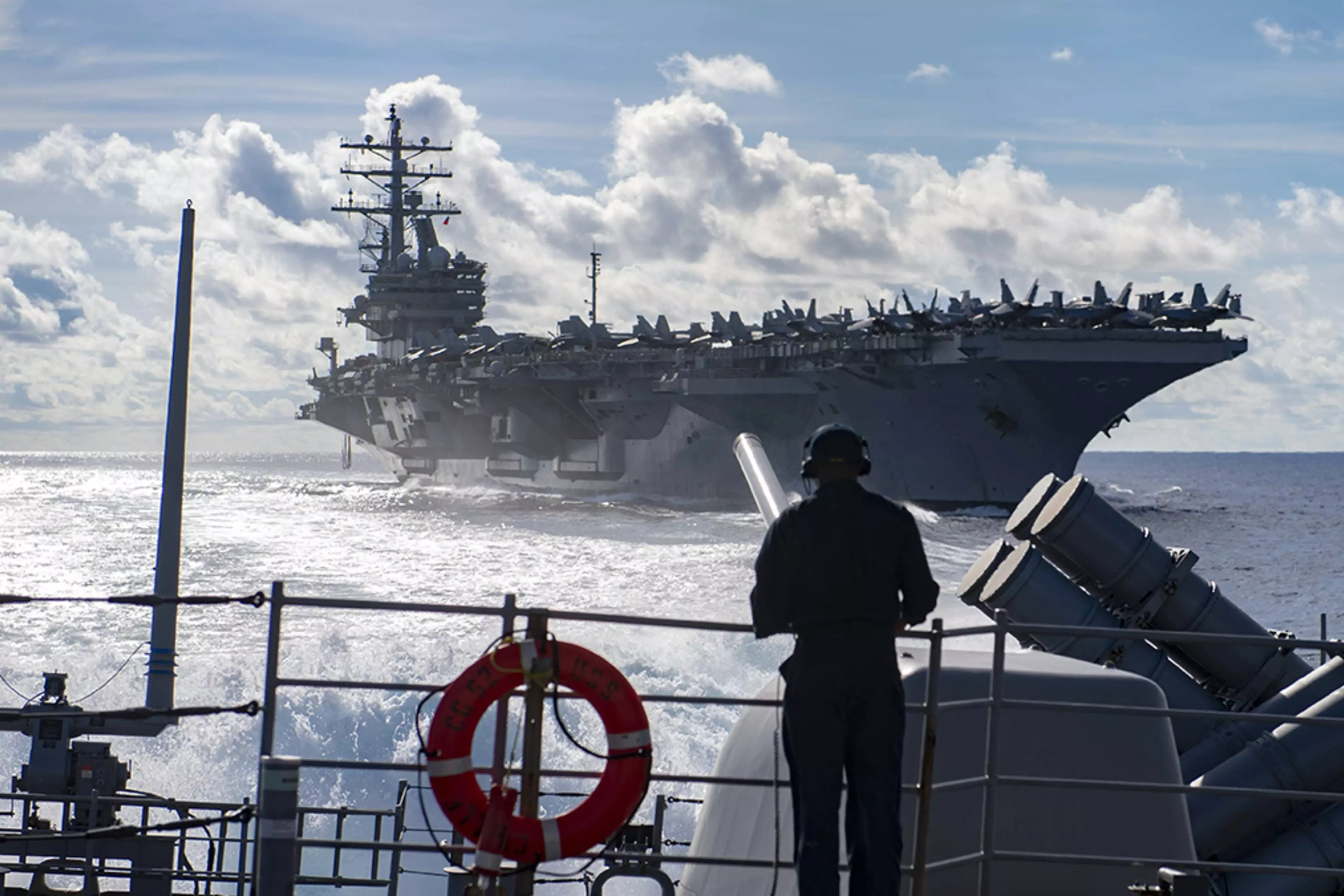US Navy Aircraft Carriers

Aircraft carriers are warships that even come from old wooden ships that used to serve for the transport of balloons, and have achieved the evolution to nuclear propulsion ships that can transport dozens of fixed and rotary winged planes.
These ships allow the Navy to deploy the power of their air forces over long distances, without the need of ground bases. The initial idea for these ships was observation, and its origins were based on ships from which they took off hot air balloons, and it was in 1910 with the appearance of the fixed wing planes, that the first flight was made from the deck of a US Navy ship.
In the Civil War in the United States, gas balloons were used for reconnaissance of Confederate positions, battles inland from the forested areas of the Peninsula, prevented access to the balloons, the coal barge, the USS George Washington, was equipped without equipment on deck to place the gas generators and balloons, and these took off from the barge, this was the first time that air tasks were attempted from ships, these actions originated the beginning of the development of aircraft carriers.

The first aircraft carriers were ships that had other purposes, and it is from 1920 that the construction of the aircraft carriers is ordered, becoming a fundamental piece during the Second World War, serving as a great support to forces like the US Military.
The US Aircraft Carriers that were built light, as in the case of the USS Independence, giving birth to a more militarized version of these ships, in 1930 the United States began to build larger aircraft carriers, aiming to dominate future naval wars.
The attack on Pearl Harbor, in December 1941, was what influenced naval strategists that without aircraft carriers it would never be possible to win a naval war, and after the destruction of much of the Japanese naval air power during the Battle of Midway, the great American industrial capacity prevailed, and they built dozens of aircraft carriers that ended the powerful Japanese fleet, ending the war with the gigantic Midway class aircraft carriers, these were 62,000 t and with a capacity for more than one hundred planes on board.
Facts about Navy Aircraft Carriers
- From the castle of the American cruiser USS Birmingham in Hampton Roads, Virginia, the pilot Eugene Ely was the first to launch from a ship in November 1910
- The US Aircraft Carriers USS Enterprise, the first nuclear-powered aircraft carrier, became operational on September 24, 1960.
- Provided security at the Seoul Olympic Games on the coast of South Korea in 1988
- In 1991 the Navy Aircraft Carriers in conjunction with the US Military participated in Operation Desert Storm
- A Russian bomber on March 5, 2008, flew over the aircraft carrier Nimitz and two F-18s took off from the carrier and intercepted it escorting it out of the area
Current U.S. Aircraft Carrier Fleet
Currently, the United States has the largest fleet of aircraft carriers in the world, 10 of them are the so-called super carriers of the Nimitz class, are ships built in the Newport News Shipbuilding shipyard, with CVN classification, nuclear propulsion, among them, we have:
- USS Nimitz (CVN-68)
- USS Dwight D. Eisenhower (CVN-69)
- USS Carl Vinson (CVN-70)
- USS Theodore Roosevelt (CVN-71)
- USS Abraham Lincoln (CVN-72)
- USS George Washington (CVN-73)
- USS John C. Stennis (CVN-74)
- USS Harry S. Truman (CVN-75)
- USS Ronald Reagan (CVN-76)
- USS George H. W. Bush (CVN-77)
All of them with displacement capacities of 102,000 tons, with more than 330 m length, 41 m width, 11.9 m draught, electromagnetic systems for launch, landing systems with electric braking and 3D radar sensors.
Others are the Gerald R. Ford class that consists of a series of aircraft carriers, whose destiny is to replace some Nimitz class, using hull design similar to the Nimitz, but different in many aspects, with new technologies such as electromagnetic catapult systems, and other features aimed at improving efficiency and costs for their operation
The first ship of the class named Gerald R. Ford will have the hull number CVN-78 1, followed by the USS Enterprise CVN-80 2 and the USS John F. Kennedy CVN 79 1.
After 100 years of their creation they remain a symbol of the US Navy and the power of the nation, and not many countries can have them, because they are expensive to maintain and operate, only 11 countries have active aircraft carriers,
They have become major components on the battlefields and exhibit the nation's military might in the world's oceans.
Shop for more military products and gifts at these pages:
Challenge Coin Nation Morale Patches
Challenge Coin Nation Custom Morale Patches
Challenge Coin Nation Stock Morale Patches
Challenge Coin Nation Officially Retired Morale Patch
Challenge Coin Nation Challenge Coins
Challenge Coin Nation Stock Challenge Coins















Leave a comment